Sailing can create serenity and a sense of calmness. The salty sea air increases oxygen absorption, which in turn, balances serotonin levels. That means you’re happier and less stressed while out on the water.
But you can’t fully achieve peace of mind if you’re not safe. Although sailing is such an enjoyable sport, it can pose dangerous risks if you’re not careful. Strong winds are one of the leading causes of sailing-related injuries and deaths. Yet, the smallest slip can send you flying into the deep waters.
No matter how well you swim, drowning is still a real possibility. If you’re on the lookout for a personal flotation device (PFD) that will protect you during your sailing excursions, you might consider purchasing a sailing life jacket. These devices help ensure safety when you put out to sea.
We’ll cover some of the best sailing life jackets out there to help you make an informed decision. We’ll also address the importance of comfort without compromising safety. We understand that some sailing life jackets can be bulky and restrictive, so our list will include jackets that support movement, while at the same time, are strong enough to keep you afloat.
So stay tuned for our sailing life vest reviews if you want well-researched recommendations and best practices for using your sailing life jacket to achieve maximum safety and support.
(If you love to do the sports activities in water, you should probably visit: Best Extreme Water Sports Life Jacket)
[Product Table]
Everything you will learn here
- The Best Sailing Life Jackets
- 1. SALVS Automatic/Manual Inflatable Life Jacket
- 2. Mustang Survival Corp M.I.T. 100 Auto Activation PFD
- 3. ABSOLUTE OUTDOOR Onyx A/M-24 Automatic/Manual Inflatable Life Jacket
- 4. Stohlquist Edge Life Jacket
- 5. Astral V-Eight Life Jacket PFD
- 6. Mustang Survival Corp Inflatable PFD
- 7. Eyson Inflatable Life Jacket Life Vest Basic Automatic/Manual
- Sailing Life Jacket Buyers Guide: Making Sense of It All
- Best Sailing Life Jackets Comparison Chart
- Wrap Up
The Best Sailing Life Jackets
If you’re an avid sailor, then you know that sailing involves complex movement and tasks. So you must look for a sailing life vest that allows movement and flexibility without sacrificing safety.
Plus, if you’re going to spend hours out on the water, you’ll need something that’s breathable, allows easy maneuvering, and fits perfectly. In no particular order, we’ve listed some of the best sailing life jackets that provide comfort, maneuverability, and safety.
(Want to purchase a life vest only for boating, please visit: Best Boating Life Jackets)
1. SALVS Automatic/Manual Inflatable Life Jacket
When we updated the article, we noticed, that this product is currently not available.
Since sailing requires an extended range of motion and sudden movements, your life jacket shouldn’t be too confining. The Automatic/Manual Inflatable Life Jacket by SALVS GEAR is an excellent option because its narrow width provides full mobility without compromising safety.
The SALVS Life Jacket features a neoprene neckline, which is ideal for all-day wearing and staying cool in the summer heat. The material is also fast-drying, so if it happens to get wet, you won’t feel it for long.
Like all manual/automatic life jackets, you can inflate this one by manually pulling the inflation cord or by immersing it into water. No matter what method you use, the jacket will inflate in less than five seconds.
The SALVS Life Jacket has a durable design with its ripstop fabric that helps resists tears and punctures. If you’re tired of constantly buying new life jackets because they keep getting holes in them, this jacket may be what you need to maximize your sailing experience and increase the life of your vest.
(You can also read our article specially on Automatic Self Inflating Life Vests)
Pros
- Slender design
- Durable fabric
- Comes with a safety whistle
- Reflectors for visibility in the dark
- CE certification
Cons
- Only one size
- Must replace the CO2 canister to re-use
- Not U.S. Coast Guard (USCG) approved
2. Mustang Survival Corp M.I.T. 100 Auto Activation PFD
- Approval: USCG – Recreational Type III (Meets minimum buoyancy rating of 22.5 LBS), Commercial Type V (Type III performance approved only when worn)
- Automatically inflates upon water immersion
- Exclusive Membrane Inflatable Technology (M.I.T.) creates a lightweight, flexible fit
The M.I.T. 100 will not only keep you safe while sailing, but you’ll also look stylish while wearing it. Available in multiple colors and patterns, this jacket was designed for ease-of-use. Not only that, but wearing the M.I.T. 100 will feel like you’re not wearing anything at all. The jacket features membrane inflation technology, which helps reduce weight, making it a lighter, more flexible fit.
What differentiates the M.I.T. 100 from other life jackets is the fact that it has a 500 denier Cordura nylon outer shell and a sturdy polypropylene waist strap and harness for security and long-lasting use. The PFD also has a replaceable CO2 cylinder you can activate using the pull tab, which inflates it. The jacket will also automatically inflate when it’s immersed in water.
When activated, the M.I.T. 100 provides 26 lbs. of buoyancy, which is over 1.5 times the buoyancy of most foam PFDs. Another feature that makes the M.I.T. 100 unique is that it’s equipped with an inflator inspection window, which allows you to inspect inflator status and check if it’s ready for use.
Pros
- Approved by the USCG
- Easy to re-pack design
- Fits most adults over 80 lbs.
- Comfortable
- Lightweight
Cons
- Re-arming kits sold separately
- No pockets
- Yellow pull tab prone to snagging
3. ABSOLUTE OUTDOOR Onyx A/M-24 Automatic/Manual Inflatable Life Jacket
- U.S. COAST GUARD APPROVED: This USCG-approved Inflatable Life Jacket inflates automatically upon water immersion or manually pulling the inflation handle. Includes a back-up oral inflation tube. Approved for users 16 years or older, and over 80 lbs. Fits 30”-52” chest
- HIGHLY BUOYANT: Provides 22.5 pounds of buoyancy when fully inflated, keeping you safe and afloat. Its buoyant material offers the necessary support to keep your head above water, providing peace of mind when boating, fishing, paddling
- MANUAL INFLATION OPTION: Easily converts to MANUAL ONLY inflation mode when paddling, fly-fishing, or other activities where there is good chance you may get wet or end up in the water. Simply pull the inflation handle, providing buoyancy to keep you safely floating. Manual conversion cap included
The Onyx Automatic/Manual Inflatable Life Jacket has a slim design that allows you to stay cool and comfortable in warm weather. The soft neckline is made of neoprene, which makes it a comfortable fit. This helps eliminate chafing and other skin irritations you might get with some life vests.
Another neat feature of the Onyx Inflatable Life Jacket is its reflective piping, which allows greater visibility in the darkness. So when you’re wearing the Onyx Life Jacket, it’ll be easier for rescuers to spot you in the water when it’s dark out.
If you’ve struggled with life jackets that were so bulky that they made you feel weighed down, then the Onyx Inflatable Life Jacket can be a viable solution. This automatic flotation vest is lightweight and provides a wide range of motion, so it won’t hold you down when you’re doing normal sailing activities like navigating your boat.
Pros
- V-back design for maximum comfort
- Universal sizing
- Comes with mesh carry bag
- Provides unrestricted movement
- Offers high visibility at night
Cons
- Not for weak or non-swimmers
- No safety rings or harness
- Expensive replacement CO2 cylinders
- One size may be too small for some adults
4. Stohlquist Edge Life Jacket
- GRADED SIZING - Stohlquist's Graded Sizing offers the best fit, and lowest footprint possible, for the widest range of body types. We have fine tuned each individual size, and sculpted the foam footprint and foam thickness to provide a better fitting, and more comfortable PFD for people of all sizes
- ERGONOMIC WRAPTURE SHAPED TORSO - The ergonomic WRAPTURE shaped torso utilizes reverse articulated foam & convex interior seams to contour to the natural shape of the body and provide a close, low profile fit. This allows us to fit young, smaller framed paddlers up to larger adults in the same style vest, while offering identical mobility across the size range
- MAXIMUM COMFORT - Padded, contoured shoulder straps; large arm openings; and a low-cut, offset front-zip entry, along with 4 side pulls, and a front waist buckle closure. Mesh sides also offer maximum ventilation
Because the Stohlquist Edge Life Jacket is so versatile, it’s an excellent option for sailing. Plus, it has sheathed shoulder straps that won’t easily catch on sailing lines.
With some PFDs, the center-zip design creates inconvenient bulk that makes it challenging to move around. But that won’t be a problem with this life jacket. It features a side-entry zipper that eliminates the common bulk problems that center-zip life jackets present. This design is more suitable because the zipper is located in a place where your body’s curves match the shape of the life jacket.
The Stohlquist Edge Life Jacket is also impressive because it has a unique sizing system. While most other PFDs change the strap adjustments with each size, the Edge has graded sizing that matches the cut of the foam to each size. For example, the XXL size is larger and has more foam to provide the ideal buoyancy for someone who wears that specific size.
The foam conforms to the natural contours of the body. This eliminates the tight, uncomfortable feeling you would typically get with conventional flat foam.
Pros
- Ergonomic design and fit
- Large arm openings for unrestricted movement
- Multi-use capability
- Adjustable shoulders
- Graded sizing for the optimal fit
Cons
- Sizes run small
- Not the best fit for women’s chests
- Snug fit may restrict room in front pocket
5. Astral V-Eight Life Jacket PFD
- Intended for recreation, fishing, and tour.
- Features a 200 x 400 denier ripstop nylon shell and a breathable polyester mesh liner.
- Center front zip entry, PE and EVA foam inserts, YKK self-locking Vislon teeth zipper, and heavy duty acetal hardware.
The Astral V-Eight Life Jacket PFD not only has a breathable soft mesh liner, but it also has vent ports in the front and back. The jacket’s Airescape system allows trapped body heat to escape and promotes airflow.
If you usually shop for brands that protect the environment and put nature first when manufacturing their products, then Astral’s V-Eight Life Jacket might be for you. The brand uses as many scraps as possible when making their life jackets. Plus, the V-Eight is completely free of toxic PVC.
The front of the V-Eight has indented padding, which is great for boaters with a larger upper body. This also prevents uncomfortable pressure on the neck due to more space in the chest area.
The V-Eight has a nylon outer shell that offers resistance from abrasions and is ideal for durability. And if you’re looking for additional comfort, then you’ll be happy with the pre-shaped foam in the vest’s front panels
Pros
- Pre-shaped foam for a comfortable fit
- Breathable polyester mesh liner
- Free of toxic PVC
- Heavy-duty hardware and zippers
- Fits men and women
Cons
- Excessive padding near the zipper may make it difficult to zip
- Zippered pockets are small
- May cause chafing under the arms
6. Mustang Survival Corp Inflatable PFD
- SAILING LIFE VEST - The HIT with Sailing Harness is the perfect companion for your next voyage. This PFD comes equipped with two heavy-duty stainless steel D-rings for use with tethers. A safety whistle and water-resistant pocket are included.
- AUTO INFLATE LIFE VEST - Mustang Survival’s Hydrostatic Inflator Technology (HIT) is industry-leading, and automatically inflates under water pressure. Do not worry about the vest deploying if you get wet or rained on, the HIT technology only deploys once you are in the water.
- TOP NOTCH SAILING GEAR - The HIT with Sailing Harness is trusted by professional sailors in competition due to it offering a full range of mobility, lightweight build, and stylish design. Equipped with two heavy-duty D-rings, this PFD allows you to remain tethered to your vessel with ease.
If you’ve tried out quite a few inflatable life jackets, then you may have had problems with them inadvertently inflating in rain, spray, and humidity. This can be a major inconvenience, especially with the high costs of replacing the jacket’s CO2 canister.
But that’s not an issue you have to worry about with the Mustang Survival Corp Inflatable PFD. This vest will only automatically inflate under water pressure. That’s because it uses hydrostatic pressure instead of moisture sensing to inflate. Therefore, it has to be fully submerged under four or more inches of water before it activates.
What’s more, the vest’s inflation cell includes reflective tape, a whistle, and a strobe light attachment, which are all handy essentials to have for the highest degree of safety. Plus, this inflatable PFD provides 35 lbs. of buoyancy, which is over twice the buoyancy of standard foam PFDs.
One other helpful feature the Mustang Survival Corp life jacket has to offer is a SecureZip enclosure, which helps the vest stay secured in high winds. This is especially useful if you’re sailing and “catching the wind.”
Pros
- Can withstand the most severe marine environments
- Adjustments fit a wide range of body types
- Fluorescent inflation for increased in-water visibility
- Low-maintenance design
- Zip closure system ensures security during rigorous activity
Cons
- Relatively expensive
- Not ideal for offshore
- Doesn’t come with a harness
7. Eyson Inflatable Life Jacket Life Vest Basic Automatic/Manual
- Fast inflation: Inflates in approximately 5 seconds to adjust your head above the water. Provides comfort and peace of mind for the sportsman, flat water paddler, or recreational boater without knowing you have it on, until you may need it
- Lightweight fabric: Polyester Oxford cover resists tears and punctures but with soft and light weigh. Easy on and easy off design
- Reusable, washable and easy to air dry: Utilize 33 gram CO2 cylinder and bobbin and green clip to reuse the life jacket
CE certified and approved by SOLAS, the Eyson Inflatable Life Vest has an adjustable belt that provides the right fit for adults and kids. You can easily adjust the size by pulling the buckle. It also comes with an extra fastener, which allows for a snug, secure fit.
The vest’s two-in-one design includes the fabric cover and airbag, which were sewn together. This compact construction makes it easier to re-pack and re-use the jacket.
If you want added peace of mind, this life vest may be the right choice. That’s because it has a convenient rescue strap. This allows someone to quickly pull you from the water and get you safely on the land.
This life jacket has an oral tube for a backup supply of air, a high-frequency whistle, two reflective bands on the airbag, and rapid inflation. These features are ideal if you’re always worried about safety when you’re on the high seas.
Pros
- Quick-release buckle
- Waterproof material
- SOLAS-approved reflectors
- 48 hours testing before leaving the factory
- Quickly inflates in 2-3 seconds
Cons
- Vertical back straps aren’t adjustable
- Doesn’t have a D ring
- May be uncomfortable around the neck for some users
Sailing Life Jacket Buyers Guide: Making Sense of It All
Finding the right life jacket for sailing can be tough, especially since this style of boating requires ease of movement. A life jacket that’s too bulky will be restrictive, while a jacket that’s too lightweight won’t be safe enough.
Achieving that perfect balance between comfort, maneuverability, and safety is paramount. Follow this guide to find the ideal sailing life jacket for you.
Advantages of Sailing Life Jackets
Safety is, of course, the most crucial advantage of wearing a sailing life jacket. But the following benefits are what set sailing life jackets apart from other PFDs:
- Generally more comfortable for continuous wear
- Provide more freedom of movement
- Available in many styles, including vests and flotation coats
- Provide significant buoyancy
- Easily integrated with safety harnesses
Disadvantages of Sailing Life Jackets
On the flip side, sailing life jackets aren’t ideal for every type of situation. For example, sailing PFDs that have auto-inflation capabilities aren’t always reliable. They might inflate when you don’t need them to, in rainy or humid weather, for example.
On the other hand, they may fail to inflate when you need them the most, such as when you fall out of your boat. Luckily, there are backup inflation options, such as manually pulling the string or using the mouthpiece to blow it up.
Testing, maintenance, and upkeep are also essential considerations. For example, having to replace the CO2 canister after use or once a year can get expensive.
Another issue with sailing life jackets is an improper fit. If you don’t get the right size, your PFD may be quite uncomfortable, especially when it inflates. An ill-fitted sailing life jacket can make it incredibly challenging to move around in the water
While increased buoyancy is a great feature to have, it can hinder in-water mobility, so swimming and changing positions can be an issue in these devices.
For some sailing life jackets, either there are no pockets at all or the pockets are inaccessible when the jacket inflates. That’s because, with some constructions, the pockets are located on the bladder cover. With jackets like these, you’d have to remove the jacket to access the pockets.
Types of Sailing Life Jackets
When choosing a sailing life jacket, you should first be aware of the different types. The Personal Flotation Device Manufacturer’s Association (PFDMA) states that the average adult needs an extra 22 pounds of buoyancy to keep their heads above water.
The following PFDs offer varying degrees of buoyancy, comfort, and safety depending on each unique situation (i.e. offshore, inland, remote, etc.)
Note: The lower the number, the better the life jacket will perform.
Type I: Offshore Life Jacket (22 lbs.)
Offshore life jackets, the most common among small boat sailors, have the most buoyant design, which allows you to flow higher in the water. Type I PFDs can usually turn wearers to a face-up position if they’re unconscious in the water.
However, because they’re so buoyant, this class of life jackets is bulkier compared to Type II and III PFDs. They’re often brightly colored to make wearers more visible to searchers.
Type I flotation devices are best for all waters, including open ocean, rough seas, and remote water where rescue might be delayed. These devices are also ideal for youth sailors and weak swimmers.
Type II: Nearshore Vest (15.5 lbs)
Nearshore vests are ideal for calm inland waters where there’s a good chance of fast rescue. Some Type II vests will turn unconscious wearers face-up, but not all of them. These devices are often bulky and aren’t the most comfortable for general sailing. Also, they don’t offer as much buoyancy as a Type I.
However, they are more comfortable than the average Type I offshore life jacket. Plus, the inflatable version is available, which is a lot less bulky. This makes them great for wearing at all times, including on lakes.
Boaters often don’t wear their life jackets unless there’s an emergency because they tend to be restrictive, so inflatable Type II vests are excellent for ensuring overall safety because they remain relatively lightweight until they inflate.
Inflatable PFDs are suitable for offshore and keelboat sailors, but dinghy sailors shouldn’t use them because they may enter the water more often due to a capsize, which will trigger inflation.
Type III: Flotation Aid (15.5 lbs.)
Like Type II’s, Type II flotation aids are best for situations where boaters can see the shore on calm or inland waters. These devices aren’t for use in rough waters because they can’t turn unconscious wearers to a face-up position. In this case, you would have to tilt your head back to avoid a face-down position in the water.
Therefore, you should only use this type of PFD if you’re an experienced swimmer or if you’re sailing in sheltered waters. However, Type IIIs provide more freedom for activities like small-boat sailing, water skiing, and fishing.
Type IV: Throwable Device (16.5 lbs.)
Type IV PFDs or throwable devices are useful in calm, inland waters as well as open waters. You can throw these devices to others in distress while you wait for rescue.
You can also use a Type IV PFD as a backup to a wearable PFD. So it’s a good idea to use both a throwable and wearable device for emergencies.
Because you must hold on to a throwable device, it isn’t for unconscious people, non-swimmers, or children. Type IV PFDs are available in different styles, such as boat seat cushions, ring buoys, and horseshoe buoys. The Coast Guard must approve them before use.
Type V: Special Use Devices (15.5 – 22 lbs.)
Special use devices, which are inflatable, include sailboard harnesses, deck suits, float coats, and white-water rafting vests. For sailing, Type V’s generally include inflatable life jackets that have harnesses and over-the-head foam life jackets for dinghy sailing.
They provide a high amount of buoyancy. Of all PFDs, special use devices are the least bulky, which makes them suitable for continuous wear. Type V PFDs require you to check the inflation chamber periodically.
Personal Inflation Devices (PFDs) Labeling and Standards
Because safety is such a vital aspect of sailing life jackets, you may notice that many brands follow specific standards to ensure the highest degree of protection. To meet such standards, they have to pass a rigorous set of tests in a lab. PFDs may receive the following stamps of approval.
European Standards (EN) – CE
During your search for a sailing life jacket, you might come across quite a few that are CE approved. This means that they meet Europe’s standards for buoyancy. There are four European standards for life jackets:
- Buoyancy aid – level 50: For use in sheltered waters or where help is close by, can’t turn a wearer from a face-down position in the water, can only provide aid to conscious people. 50 Newtons (11 lbs.) of buoyancy.
- Life jacket – level 100: For swimmers and non-swimmers in sheltered and calm waters, not guaranteed to roll an unconscious person onto their back. 100 Newtons (22 lbs.) of buoyancy.
- Life jacket – level 150: For swimmers and non-swimmers in offshore and coastal waters, can turn an unconscious person onto their back, may not help an unconscious person wearing heavy waterproof clothing. 150 Newtons (33 lbs.) of buoyancy.
- Life jacket – level 275: For offshore use and severe conditions, useful for those wearing heavy protective clothing. 275 Newtons (61 lbs.) of buoyancy.
International Standards – ISO
The International Organization for Standardization (ISO) is a worldwide federation of national standards, which includes recognized standards for life jackets. Its rules are the same as CE in terms of buoyancy and features.
Commercial Standards – SOLAS
Safety of Life at Sea (SOLAS) life jackets meet high performance standards. Sailing life jackets with this designation will turn you on your back to keep your face out of the water, whether you’re unconscious or not.
U.S. Coast Guard – USCG
If you come across a life jacket that’s Coast Guard Approved (CGA), that means it meets specific buoyancy levels. For example, inflatable Type I PFDs must provide at least 33 lbs. of buoyancy.
Whereas, inflatable Type III PFDs should provide at least 22 lbs. of buoyancy. They typically have more foam, multiple buckles, and increased bulk. If flotation is a number one priority, then a CGA may be best for you to wear during your sailing excursions.
Also, the Coast Guard requires inflatable PFDs to have a full cylinder as well as a firing mechanism with a green status indicator, which shows that it’s armed and ready for use.
Choosing the Right Sailing Life Jacket for Your Needs
The fit of your PFD is crucial. It should be comfortable and snug. Having a comfortable life jacket that offers lots of room in the shoulders and large arm openings is vital because it allows movement, which is especially useful for sailing.
As a sailor, you’re going to be moving around the boat quite a bit. You’ll probably also be bending at the waist and changing sides quickly. Therefore, a non-bulky life jacket should be your top choice.
This is especially true in situations where rescue response time is short. That’s because if help is nearby, you likely won’t need a sailing PFD with the highest amount of buoyancy. Thus, you may appreciate slightly less flotation in favor of a smaller life jacket that offers more mobility.
Furthermore, it might be wise to forego life jackets with buckles as they can potentially snag on rigging. So be sure to choose a more simple vest with clean lines.
How to Safely Use Your Sailing Life Jacket
There is a wide range of factors that affect the safety of your sailing life jacket and how effective it will be when you need it the most. Follow these tips to ensure your PFD will have the highest chance of effectiveness if there’s an emergency.
Try Your PFD
It’s best to try on your life jacket before use to see if it’s comfortably snug. Move around to make sure it doesn’t ride up your back or neck region. It’s also a good idea to test your PFD to make sure it provides the correct buoyancy for your weight.
To do this, relax your body and tilt your head back in shallow water. It’s the right buoyancy if it keeps your chin well above water and allows you to breathe easily. If it doesn’t do either, then you need a device with higher buoyancy.
Keep in mind that the clothes you wear and items you may have in your pocket can affect the way your PFD works. For example, if you’re wearing bulky clothing, it may adversely affect the PFDs self-righting capacity because clothing absorbs water and makes a person heavier to support.
The heavier you are, the more buoyancy your life jacket should provide. So if you’ll be sailing in colder conditions which will require winter clothing, you might consider choosing a life jacket with higher buoyancy. This is why you should wear the clothes you’d wear while sailing when trying on a PFD.
Check Your PFD
Check your PFD regularly for rips, tears, and holes. Also, inspect the seams, fabric straps, and hardware. Make sure your PFD doesn’t show signs of waterlogging, mildew odor, or shrinkage of buoyant materials, which are all characteristics that can alter the effectiveness of your jacket.
Know the Importance of Wearing Your PFD
If you’re like many other sailors, then you may choose not to wear your life jacket until there’s an emergency. This might be because you don’t like the way it looks or feels on you. Luckily, there are sailing life jackets available in various styles, colors, sizes, and shapes.
Another reason you might not wear your PFD is that you may think the risk of danger is low. Contrary to popular belief, most drownings don’t occur way out at sea. 90% of the time, drownings happen in inland waters, only within a few feet of safety, according to the U.S. Coast Guard.
For more information on drowning, check out our interactive resource for U.S. and Worldwide Drowning Statistics. But if you want to ensure maximum safety and prevent drowning, make sure you wear your PFD. Not only that, but ensure that it fits correctly, has multiple backup options, and can turn you from a face-down position if you’re a weak swimmer.
Best Sailing Life Jackets Comparison Chart
| Product Name | Price | Size (Fit for) | Safety | Unique Features |
|---|---|---|---|---|
| SALVS Automatic/Manual Inflatable Life Jacket | $ | S, M, L, XL | Slender design, Comes with a safety whistle | Jacket has durable design with rip-stop fabric helps resists tears and punctures |
| Mustang Survival Corp M.I.T. 100 Auto Activation PFD | $-$$ | L, U | Automatically inflate when it•s immersed in water | Replaceable CO2 cylinder, Comfortable, Lightweight |
| ABSOLUTE OUTDOOR Onyx A/M-24 Automatic/Manual Inflatable Life Jacket | $-$$ | S, M, L, XL | Provides unrestricted movement | Offers high visibility at night |
| Stohlquist Edge Life Jacket | $ | S, M, L, XL, XXL | Foam conforms to the natural contours of the body | Multi-use capability, Adjustable shoulders |
| Astral V-Eight Life Jacket PFD | $-$$ | S, L, XL | Free of toxic PVC, Heavy-duty hardware and zippers | Pre-shaped foam for a comfortable fit |
| Mustang Survival Corp Inflatable PFD | $$ | L, XL | Zip closure system ensures security during rigorous activity | Fluorescent inflation for increased in-water visibility |
| Eyson Inflatable Life Jacket Life Vest Basic Automatic/Manual | $$ | L, XL | SOLAS-approved reflectors, Waterproof material | Quickly inflates in 2-3 seconds |
Wrap Up
Choosing a life jacket for sailing can be a headache if you don’t know what to look for. Luckily, some manufacturers specify for which kind of watersports a particular life jacket is best. If not, you can still find one that’s useful for sailing with a trained eye.
Whether you like to sail offshore or nearshore, there are a variety of life jackets out there that offer the right amount of buoyancy, protection, breathability, and maneuverability. Even if a life jacket you have your eye on comes with trade-offs, the key to making the right choice is all about deciding which factor matters to you the most.
Last update on 2025-04-30 / Affiliate links / Images from Amazon Product Advertising API

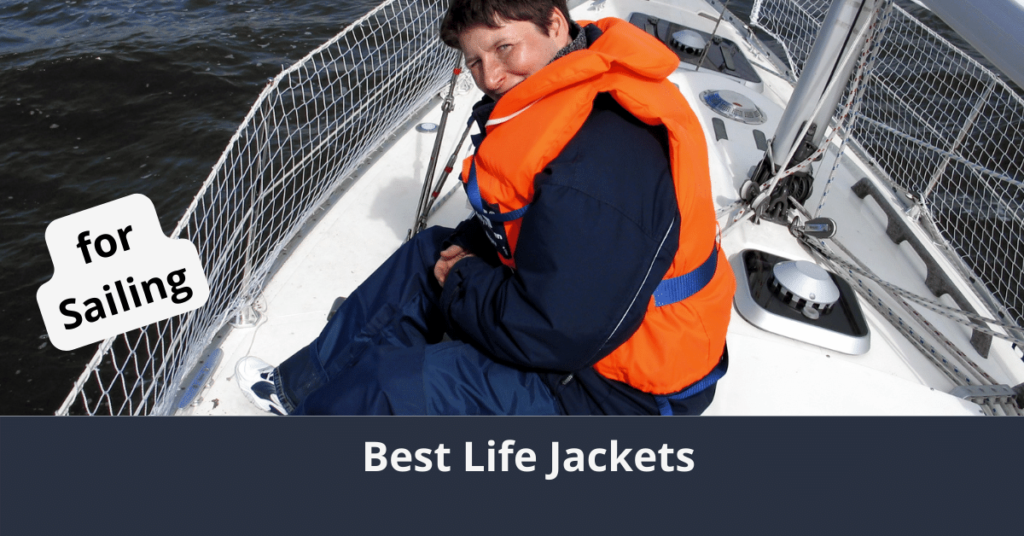







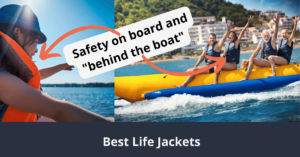


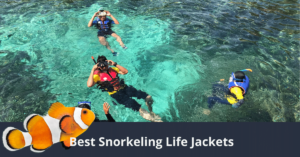
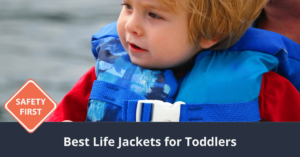
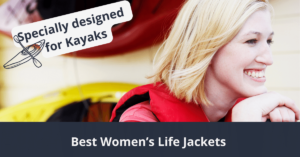
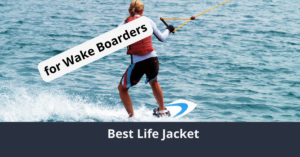
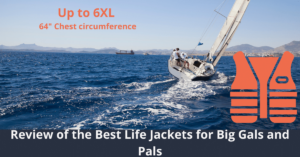
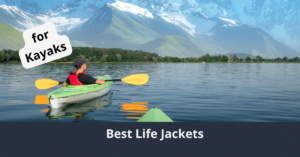
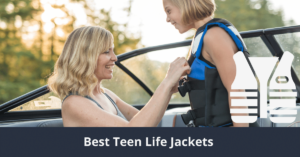
![7 Best Jet Ski Life Jackets with awesome fit [2023 guide] 20 Best Jet Ski Life Jacket](https://insmoothwaters.com/wp-content/uploads/2022/09/Best-Jet-Ski-Life-Jacket-300x157.png)